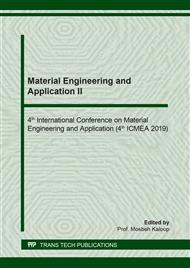p.108
p.114
p.119
p.124
p.132
p.138
p.144
p.150
p.155
The Comparison between Mechanical Properties of Laser-Welded Ultra-High-Strength Austenitic and Martensitic Steels
Abstract:
The paper investigates experimentally the usability of ultra-high-strength stainless steel and abrasion resistant steel in laser-welded sandwich structures. The fatigue and shear strength of laser joints were investigated using lap joints that were welded using two very different energy inputs. Also the effect of multiple weld tracks was investigated. The properties of separate laser welds were characterized by hardness testing and optical microscopy. Results of the hardness measurements showed that there was softened area at heat-affected-zone and weld metal of the ultra-high-strength stainless steel welds. AR steels weld metal was harder than base metal and there was softened zone in heat-affected-zone of the weld. The shear strength of tested single weld joints of the ultra-high-strength stainless steel was higher compared abrasion resistant steel single weld joints, but stronger joint can be made with multiple weld seams for abrasion resistant steel. Fatigue strength of investigated ultra-high-strength stainless steel lap joint was lower than fatigue strength of abrasion resistant steel lap joint in the low-cycle regime, but there was no practical difference in fatigue limit (10e7 cycles).
Info:
Periodical:
Pages:
132-137
Citation:
Online since:
May 2020
Authors:
Price:
Сopyright:
© 2020 Trans Tech Publications Ltd. All Rights Reserved
Share:
Citation:


